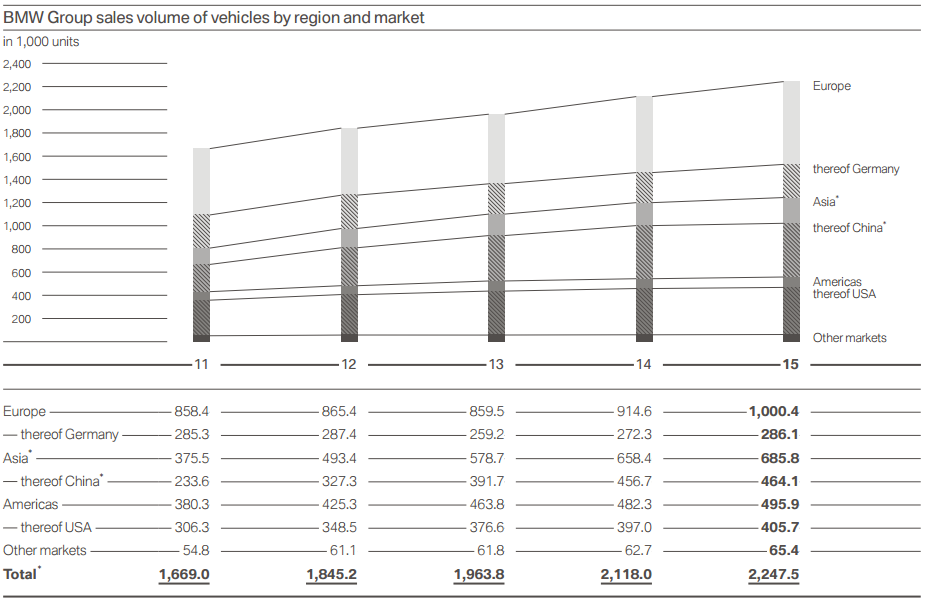Auto Industry Headwinds: Why BMW And Porsche Face Challenges In China

Table of Contents
Intensifying Domestic Competition
The Chinese automotive market is no longer dominated by foreign imports. The rise of domestic brands and the strategic advantages of joint ventures are reshaping the competitive landscape for BMW and Porsche.
Rise of Domestic Brands
The rapid ascension of Chinese electric vehicle (EV) brands like BYD, NIO, and Xpeng is significantly disrupting the luxury import segment. These companies possess several key advantages:
- Superior understanding of Chinese consumer preferences: Domestic brands are intimately familiar with local tastes, cultural nuances, and evolving demands, allowing them to tailor their offerings more effectively.
- Stronger nationwide dealership and service networks: Extensive dealership networks provide superior reach and customer service compared to some foreign brands.
- Government support and incentives for domestic EV adoption: Government policies heavily favor domestic EV brands through subsidies, tax breaks, and preferential regulations.
- Aggressive marketing campaigns targeting younger demographics: Chinese EV brands employ sophisticated digital marketing strategies effectively targeting younger, tech-savvy consumers.
Joint Ventures and Local Partnerships
Established joint ventures with Chinese automakers provide significant competitive advantages, posing a challenge to wholly-owned subsidiaries like BMW and Porsche. These advantages include:
- Access to established supply chains and manufacturing expertise: Joint ventures leverage existing infrastructure and local expertise, reducing production costs and improving efficiency.
- Deeper understanding of local regulations and market dynamics: Navigating China's complex regulatory environment is easier with a local partner.
- Cost advantages from local sourcing and production: Local sourcing of components and manufacturing significantly reduces costs compared to importing vehicles. This is crucial in a price-sensitive market.
Shifting Consumer Preferences
Understanding the evolving preferences of Chinese consumers is paramount for BMW and Porsche's continued success. The demand for electric vehicles, advanced technology, and personalized experiences is reshaping the luxury landscape.
Electrification and Technological Advancements
Chinese consumers are increasingly prioritizing electric and hybrid vehicles, along with advanced driver-assistance systems (ADAS). This shift necessitates a rapid acceleration of electrification strategies by BMW and Porsche:
- Demand for cutting-edge technology and features: Chinese consumers are early adopters of new technologies, demanding the latest features and innovations.
- Growing environmental consciousness among consumers: There’s increasing awareness of environmental issues, driving the demand for eco-friendly vehicles.
- Government policies promoting EV adoption: Government incentives and regulations are further accelerating the shift towards electric mobility.
Brand Perception and Luxury Redefined
The traditional understanding of luxury is being redefined in China. Younger consumers prioritize experiences and personalized services over mere brand prestige.
- Demand for personalized customer experiences and digital connectivity: Consumers expect seamless digital integration, personalized service, and tailored experiences.
- Shifting focus from brand prestige to overall value proposition: The focus is shifting from brand recognition to the overall value offered, including features, service, and price.
- Growing interest in sustainable and socially responsible brands: Sustainability and social responsibility are becoming increasingly important factors in purchasing decisions.
Macroeconomic Factors and Geopolitical Risks
Beyond competition and consumer preferences, macroeconomic factors and geopolitical risks significantly impact the performance of BMW and Porsche in China.
Economic Slowdown and Uncertainty
China's economic growth has moderated in recent years, impacting consumer spending on luxury goods, including premium vehicles. This presents several challenges:
- Impact of trade tensions and geopolitical uncertainty: Geopolitical tensions and trade disputes create uncertainty and potentially affect consumer confidence.
- Fluctuations in currency exchange rates: Exchange rate volatility impacts the pricing and profitability of imported vehicles.
- Increased regulatory scrutiny and potential import tariffs: Stringent regulations and potential tariffs increase costs and complicate market entry.
Supply Chain Disruptions
Global supply chain disruptions, particularly semiconductor shortages, significantly affect production and delivery times.
- Impact of semiconductor shortages: The global semiconductor shortage has impacted the production capacity of many automakers, including BMW and Porsche.
- Increased logistics costs and transportation delays: Disruptions to logistics and transportation networks increase costs and lead to delays.
- Potential for factory closures and production stoppages: Supply chain issues can lead to factory shutdowns, affecting production and sales.
Conclusion
The Chinese automotive market presents significant challenges for luxury brands like BMW and Porsche. Intensifying domestic competition, evolving consumer preferences, and macroeconomic uncertainties demand swift and strategic adaptation. Successfully navigating these headwinds necessitates a multi-pronged approach encompassing electrification, technological innovation, localized marketing strategies, and a deep understanding of the evolving dynamics of the Chinese luxury market. To remain competitive, BMW and Porsche must continue innovating and addressing the specific challenges they face in the ever-changing landscape of the BMW and Porsche in China market. Understanding these challenges is crucial for anyone invested in or observing the future of the luxury automotive sector in this vital market.

Featured Posts
-
 Fox News Faces Defamation Lawsuit From Ray Epps Over January 6th Coverage
Apr 29, 2025
Fox News Faces Defamation Lawsuit From Ray Epps Over January 6th Coverage
Apr 29, 2025 -
 Securing Your Capital Summertime Ball 2025 Tickets A Step By Step Guide
Apr 29, 2025
Securing Your Capital Summertime Ball 2025 Tickets A Step By Step Guide
Apr 29, 2025 -
 Bundesliga Legends The Impact Of Italian Players Like Grifo Immobile And Toni
Apr 29, 2025
Bundesliga Legends The Impact Of Italian Players Like Grifo Immobile And Toni
Apr 29, 2025 -
 Ohio River Flooding Forces Cancellation Of Thunder Over Louisville Fireworks
Apr 29, 2025
Ohio River Flooding Forces Cancellation Of Thunder Over Louisville Fireworks
Apr 29, 2025 -
 Capital Summertime Ball 2025 A Guide To Ticket Acquisition
Apr 29, 2025
Capital Summertime Ball 2025 A Guide To Ticket Acquisition
Apr 29, 2025
